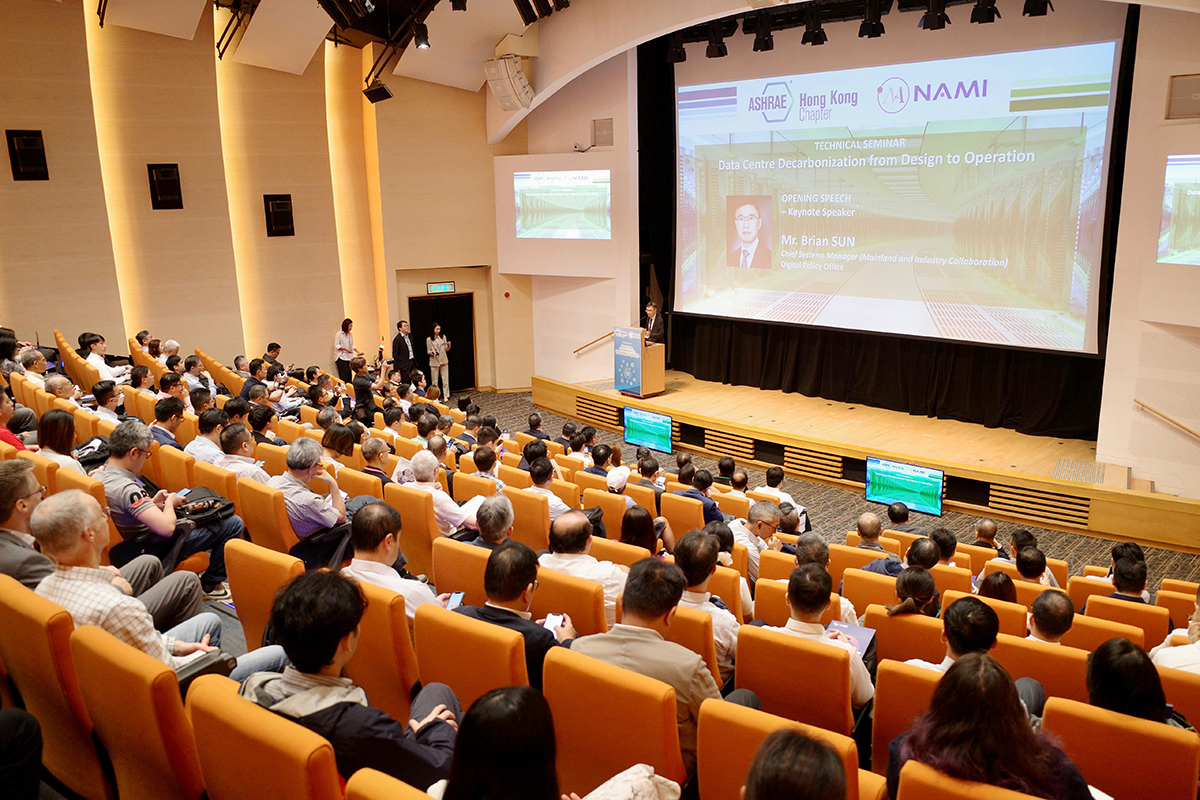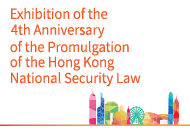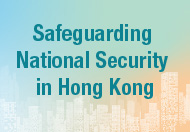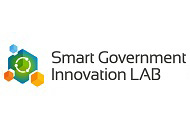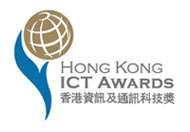Speech by Mr Brian Sun, Acting Assistant Commissioner (Mainland and Industry Collaboration) at the “Data Centre Decarbonization from Design to Operation” (with photos)
Andy (Mr Andy Fung, Chief Executive Officer, Nano and Advanced Materials Institute ), Ivan (Dr Ivan Sham, Chief Commercial Officer, Nano and Advanced Materials Institute), Taylor (Mr Taylor Chow, President, ASHRAE Hong Kong Chapter), honourable guests, ladies and gentlemen,
Good morning! It is my great pleasure to meet you all at this technical seminar on “Data Centre Decarbonization from Design to Operation”, jointly organised by the ASHRAE Hong Kong Chapter and the Nano and Advanced Materials Institute (NAMI). I extend my heartfelt gratitude to ASHRAE and NAMI for initiating this valuable seminar for us to explore innovative data centre design solutions from planning to operation, which echoes the Government’s policies to develop data centres in Hong Kong and to achieve deep decarbonization and the goal of carbon neutrality in fostering a sustainable future.
Data centre is a key infrastructure supporting the development of digital economy and technological innovation. The Hong Kong Innovation and Technology (I&T) Development Blueprint promulgated in 2022 put forth accelerating the development of new digital infrastructure. With the rising demand for data centres driven by the growth of digital economy, the Government is committed to promoting data centre development in Hong Kong by implementing various facilitation measures, which include provision of land, encouraging conversion of industrial buildings into data centres and use of industrial lots for high-tier data centre development. While we will continue to identify suitable sites for data centre establishment to drive innovation and technological progress, potential land sources include the San Tin Technopole and Sandy Ridge in the Northern Metropolis.
Among the potential land sources, I would like to highlight Sandy Ridge in the North District near Lo Wu, as it is probably the first piece of I&T land for disposal in the Northern Metropolis. In a bid to further strengthen the infrastructural support for the I&T sector, the 2023 Policy Address announced to change the use of the 2-hectare spade-ready site at Sandy Ridge for I&T and related purposes. Having considered its location, infrastructure planning, commercial, transport and community facilities nearby, as well as the industry’s keen demand for digital infrastructure facilities, it is considered feasible to develop the site into a Data Park for data centres and related uses. This Data Park is envisioned as a park for diverse data industries, including data centre and artificial intelligence (AI) supercomputing services, large language model development, big data analytics and data management. We expect that the Data Park can help accommodate the growing demand for data centres and related services, and create a synergistic effect for attracting data professionals and projects to come to Hong Kong, thereby boosting the rapid advancement of the data industry and ultimately strengthening Hong Kong’s position as an international I&T centre, which aligns with the Government’s strategy of “South-North dual engine (finance-I&T)”.
As the Government keeps supporting the development of digital infrastructure, we are also going to spearhead efforts to reduce carbon emissions and promote sustainable practices in the industry.
Data centre sustainability involves adopting energy-efficient practices, reducing carbon emissions and enhancing resources utilisation through metrics like Power Usage Effectiveness (PUE) and Water Usage Effectiveness (WUE). In fact, the Government has been encouraging data centres to enhance energy efficiency, as well as promoting the adoption of best practices to reduce power consumption and carbon emissions. We require the industry to submit an energy saving plan when they apply for data centre concessionary measures. Applicants can refer to the “Green Data Centres Practice Guide” and the “BEAM Plus Data Centres Assessment Tools” developed by the BEAM Society to help improve the overall energy efficiency and sustainability performance of data centres.
To further promote energy saving and carbon reduction, the Government is also proposing legislative amendments to the Buildings Energy Efficiency Ordinance and relevant legislation for phasing down local production and consumption of hydrofluorocarbons (HFCs). These initiatives demonstrate the Government’s commitment to sustainable methods of efficient energy consumption and working towards carbon-neutral operations for a greener future.
Finally, I hope that this seminar serves as a catalyst for fruitful conversations and practical steps towards sustainable data centre development, showing not just how advanced we are technologically, but also how we care for our environment and our sustainable future. I wish this seminar a complete success and all of you the best of health and business. Thank you.
- ENDS -







